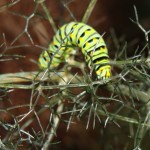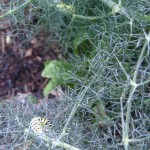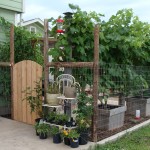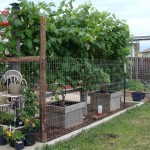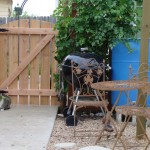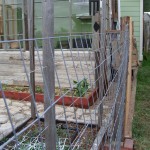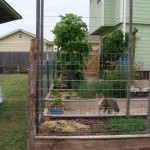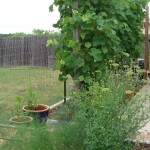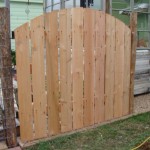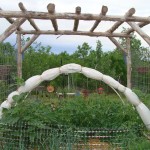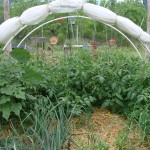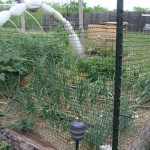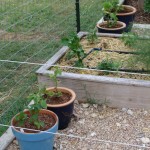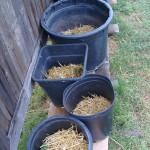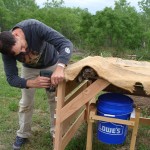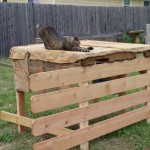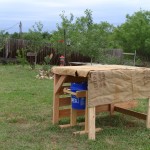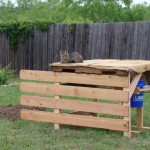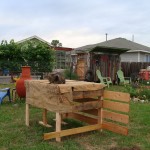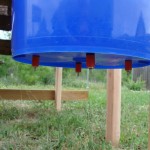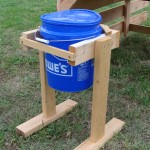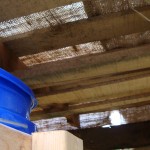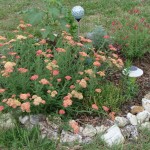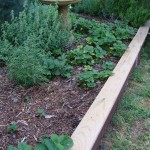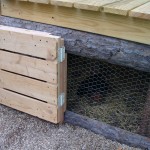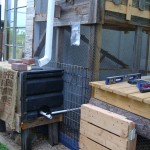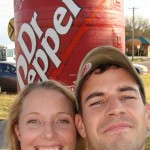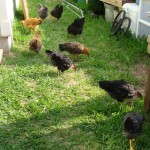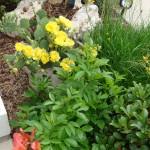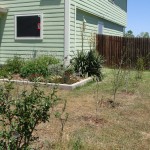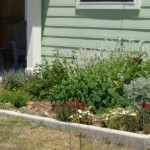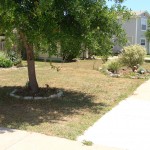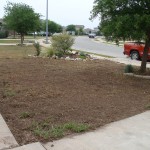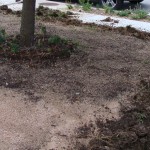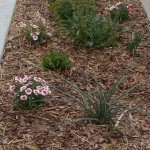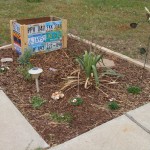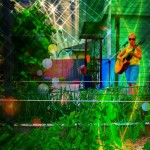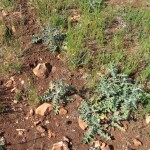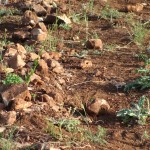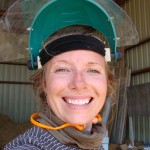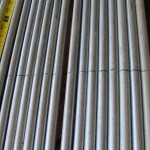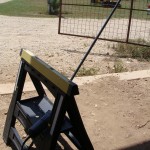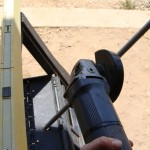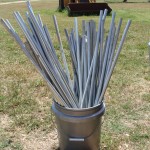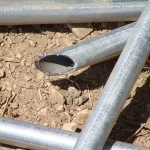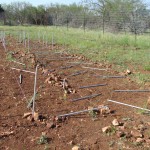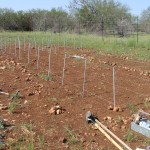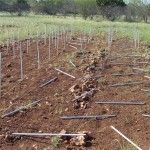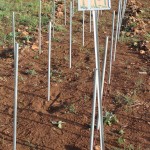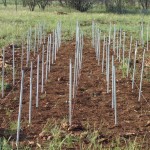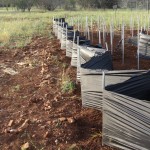Spring Ahead Locavores!
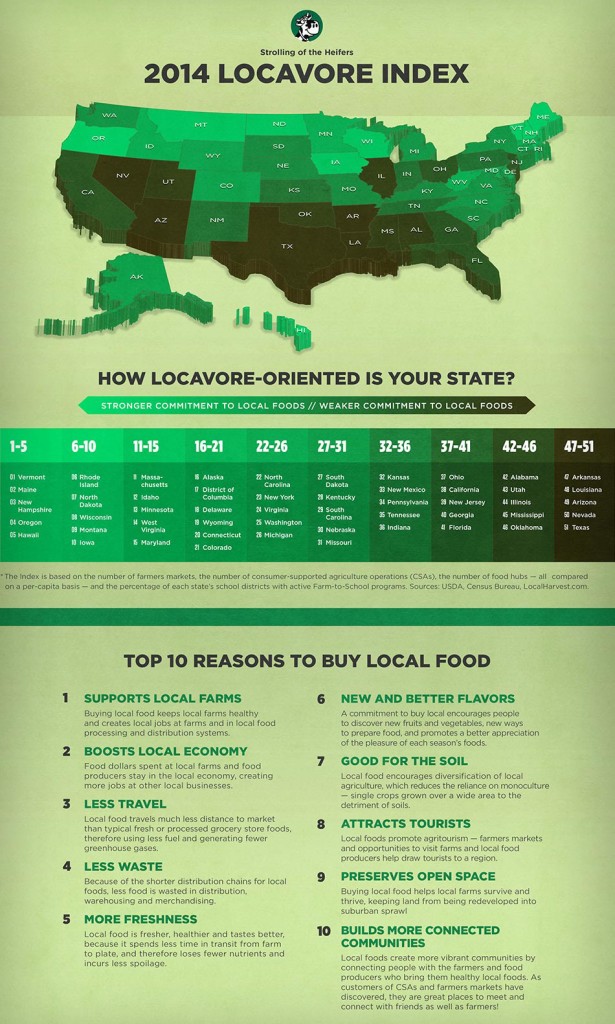 Spring ahead and become a locavore (Strolling of the Heifers, Inc. 2014)! But apparently Texas is last on the locavore index according to this Vermont organization. Although it’s slightly outdated too, but Vermont is a tiny state and Texas is enormous so the fact that it’s last on this chart is depressingly not surprising. At any rate size doesn’t matter. Even though it clearly does to Vermont and y’all know the Texan saying, “everything’s bigger in Texas!” But Texans probably aren’t as concerned with the title of locavore as they are about doing what they’ve done for centuries, by living off the land. Keep it simple, support the community by buying from farmers you know or create your own food supply. You will find simpletons and sustainable homesteaders throughout this vastly and drastically different state with a variety of growing conditions in different ecoregions. I would say the Austin food system is doing well and on its way to getting better.
Spring ahead and become a locavore (Strolling of the Heifers, Inc. 2014)! But apparently Texas is last on the locavore index according to this Vermont organization. Although it’s slightly outdated too, but Vermont is a tiny state and Texas is enormous so the fact that it’s last on this chart is depressingly not surprising. At any rate size doesn’t matter. Even though it clearly does to Vermont and y’all know the Texan saying, “everything’s bigger in Texas!” But Texans probably aren’t as concerned with the title of locavore as they are about doing what they’ve done for centuries, by living off the land. Keep it simple, support the community by buying from farmers you know or create your own food supply. You will find simpletons and sustainable homesteaders throughout this vastly and drastically different state with a variety of growing conditions in different ecoregions. I would say the Austin food system is doing well and on its way to getting better.
Do what you can to support your local community. Find out who the farmers are that live closest to you and find out if you can volunteer for them or join their CSA (community supported agriculture). CSA is when you sign up and pay dues to a farm of choice and they guarantee you a share of goods for a certain number of weeks out of their harvesting season. This is one of the best ways that you can support your local food system and help to create more food secure neighborhoods. By paying upfront for a share of the upcoming harvest, you help support the farmer before they plant the seeds that grow into the foods that feed us! Now you know what it means to join a CSA, muy importante!
If you aren’t ready to make that kind of commitment just yet but are interested in gardening and having access to fresh produce, go to a farmers market and ask some of the local vendors what they like to grow! There are generally very good ideas that evolve and transform at farmers market booths and you can also learn exciting new ways to cook unique produce and other goodies too! It’s what I love most about going to the farmers market or selling at one myself. It’s amazing the things you learn while talking to the community!
You can also go to a local nursery, preferably not a big box chain store, and ask them for help on what plants would be best for your area! If you want to start growing your own food, just know that you are amazing and you can do it! Don’t quit after your first try and don’t tell yourself that you have a black thumb because a plant died. There are a lot of things to contend with which is why it helps to go the experts at the garden center and I’ve found that’ll help you get started on the right path if you don’t have any other options. Many of nurseries have free classes about gardening, especially in the spring! Another reason to buy and learn locally!
Agriculture extension services are one of the best free gardening, farming resources out there. Take advantage of them, every state has extension offices that offer a variety of courses. Texas has some outstanding courses for new farmers and ranchers. I attended the Texas Agrability Workshop in January in Georgetown, Texas. It was fantastic!
Catching up with you, as usual my nose is in my studies and my blogging falls by the wayside! We have also been working on a bunch of outdoor projects this winter and we can’t wait to post pictures. We will be updating all of the Late Bloom Homestead photos since we have made drastic changes in the past year. You’ll be shocked as to the progress. We also have had our 2nd flock of heritage breed chicks for almost 2 weeks! Please join our Late Bloom America Facebook to see pictures and any videos that we’ve posted. I posted one today to show you the chicken brooder with the rainwater drip nozzle system that Davin built.
I’m studying Sustainable Food Systems now at Green Mountain College, for my Master of Science Degree. I’m almost in my 3rd week of Sustainable Agriculture Theory and Practice. The program is very intensive and unparallel to any program of it’s kind in the US. You may see some of my postings as a spin off of my discussions at school since I spend quite a bit of time preparing mini papers for grades, aka “discussions” are mandatory usually 6 times a week. So you can see how bad my website is slacking in this arena!
Ole man Winter, I was happy to see snow, play in it, go cross country skiing, and learn about the food systems in Vermont a few weeks ago. I also attended the NOFA conference in Burlington. Some of the workshops that I went to included a commercial mushroom farming presentation, the benefits of growing elderberries by four different farmers, secrets for growing popcorn, ginger, and sweet potatoes. Some others too. I personally found the Mother Earth News Fair ten times more educational at a fraction of the price. But the NOFA conference food was spectacular all presented from the local foodies throughout the region. They had an ice cream social Sunday evening from a local creamery and I was able to get fresh coffee and]cream ice cream, man it was good, can you believe it in -15 weather! Ha!
Works Cited
Strolling of the Heifers, Inc. “Strolling of the Heifers 2014 Locavore Index highlights benefits of food from local farms.” Strolling of the Heifers. April 7, 2014. http://www.strollingoftheheifers.com/locavoreindex/ (accessed March 9, 2015).
May Moments Bring Us Joy
Another Wednesday at the Manor Farmers Market. I met quite a few wonderful people today! I always enjoy engaging conversations with others who are involved in similar projects and experiments at home. We were talking citrus and although I love this fruit dearly, it has been an ongoing challenge of mine to get our Meijer Lemon, Lime, and Tangerine to grow fruitfully in the past. I reluctantly gave up this winter only to find myself getting new varieties this spring and more literature. The fact that I didn’t have a single book on the matter is quite silly since I am immersed in so many others that revolve around food and dirt. My most favorite reads this spring have definitely been carried around with me wherever I go, thinking I’ll have a minute or two.
How to Grow More Vegetables by John Jeavons, which John recommended (Natural Gardener). When I interviewed him in March I asked, if you could suggest one book, what would it be, and that was the one he promoted. I encourage you to get your hands on a copy. It incorporates biointensive growing methods, how many plants and calories you need to feed a certain number of people, and companion planting, ecosystem balance, charts, soil fertility, sustainability,composting, open-pollinated seeds, propagation, seed saving, and of course so much more that I can’t go into detail. You’ll just need to get a copy yourself 🙂 Build that library, put stickers-the ones you get sent to you in the mail with your address on them, in your paper passions and share them with your neighbors and friends who could use to earn a little more. Currently also reading the $64 Tomato.
In that past month we’ve literally transformed our backyard haven with Davin adding gates to the gardens closest to the house to prevent our feathered friends from embarking on beans, peas, eggplant, and grapes. For some reason Davin thought it’d be funny to show them new things they could eat, before he built the fence, which meant flock sitting was necessary.
Our biggest accomplishment of the year in promoting sustainability is from our direct influence and education to our friends and neighbors on the importance of growing your own food, harvesting rainwater, repurposing materials, and alternative methods to grow plants, fruits, and vegetables. Right before we got the April/May issue of Mother Earth(ME) we sent a subscription to our neighbors the Calebs, since they had begun their conquest in transforming their backyard. Once we got that issue in the mail the letter from the Editor of ME asked readers to send a subscription to someone new, I was gleaming with joy knowing that I did this right before they told others to! The stars are aligned. When affordability of growing a garden was brought up, I piped up, “you can’t afford not to!” And thus their journey began. It has been extremely exciting watching them get enthralled in projects that procure Mother Earth. More importantly their children are also learning new skills too! We will be sharing pictures with you and the impressive strides they’ve made since February. The picture displayed is a picture with one of their girls helping Davin with beak trimming. When the Calebs started asking some basic gardening questions I decided they needed more than my blundering mind so I put together a small resource booklet for them of some of the things that were important. I included crop charts for the year, Ag Extension charts on crops that do well in our county, companion planting information, farmer’s almanac info, basic gardening principles for handling drought and intense heat, seed companies to order from and gave them a stack of my Spring seed catalogs from various companies. I also advised them on local gardening centers, online resources and opportunities that might interest them. We’ve also opened up our green library to them which includes books and old issues of Mother Earth News. They sprung forward and have already learned the ever challenging journey that attaining a green thumb isn’t always promising and definitely not easy. They take pride in the fact that they have joined just in time to learn from all of our mistakes. It makes Davin and I chuckle for sure. We have had years of disappointment on growing certain crops here and are always researching this seasons insect challenges. We are very flattered that our methods of living have rubbed off on someone new, especially a family of six! We are thrilled to exchange ideas and lessons learned each week. Gardening humility keeps us humble and surely reminds me of what I’m here for and what my great grandmother taught me.
I got extensions on my two research projects at the University. I hope to finish them in the next month. I still have marketing surveys for seaweed compost and can email you one if you are interested, message me on Facebook or send me a message through our contact form. The sustainable agriculture project on agrivoltaic methods is more like farming in a third world country. I’m learning new skills that I didn’t know I had, including learning how to balance extreme circumstances in the dirt, adversity against all odds, farming in the field alone.
Our spring projects combine different endeavors. Davin’s been keeping busy learning about Hugulkultur, bee collecting, watching countless Wranglerstar youtube videos, searching for Morels in Texas and Missouri, and fishing Trout. He also went to Engineering school for work and has been actively building new projects most every weekend. This past weekend he made a Heat Hut-a place for animals to dwell in the shade in the heat of the sun, three gates, and fenced in our greenhouse chicken coop, outdoor kitchen and shower, grapescape, long garden beds and clothesline lounge.
Some of our updated project pictures are shown.We will try to upload them by projects to our Project section on our site including new pictures of the updated Greenhouse and Chicken Coop that Davin finished in April. Some of the projects you see are my Ag Research Project on Agrivoltaic Systems, Heat Hut, Outdoor Garden Fencing, Spring Landscaping Projects in the front yard, Gardening Methods, Beneficial Insects, Rainwater Drip System, and Free Range Waterer.
#gallery-1 { margin: auto; } #gallery-1 .gallery-item { float: left; margin-top: 10px; text-align: center; width: 33%; } #gallery-1 img { border: 2px solid #cfcfcf; } #gallery-1 .gallery-caption { margin-left: 0; } /* see gallery_shortcode() in wp-includes/media.php */
- Papilio glaucus-Eastern Tiger Swallowtail
- Herbs in the garden designated for beneficial insects
- Davin’s May Project 2014
- Mic fenced in…
- Herbs, Blueberries, and Table Grapes
- Back Gate
- Cover for Tomatoes
- Tomatoes, Onions, Garlic, Peppers, Carrots, Radishes, Beets,
- Pergola Garden Bed May 2014
- Misty, Jubilee, Sweetheart, Sharpblue Blueberries
- Container Gardening with Potatoes
- Davin stapling the burlap down to the frame
- Let your free range animals find shade from the sun!
- Rafe on the new heat hut.
- Make your own free range feeder!
- Easy to move free range water feeder
- From the underside
- Eversweet and Tristar Strawberries
- Herb Garden experiments
- Cedar Hinged Door with lock for easy access.
- Davin created this rainbarrel to collect rain from the Greenhouse coop which runs into the 4 drip feeders inside the coop.
- Dublin, Texas in 2011
- The ladies grazing
- Prickly Pear Cactus, Cana Lily, Esperanza, Thyme, Marjoram, Bulbine
- Transplants and Turf
- Front Garden Bed
- Kristin’s Spring 2014 project: front lawn
- After working soil, still digging…
- Spreading Dirt, KK’s project
- New Front Spring Bed Near Curb March 2014
- New Front Spring Corner Bed April 2014, Kristin’s Project
- Garden Music
- Ground I’m growing in, Kristin’s Project for Sustainable Studies in Graduate School at Texas State University
- More dirty madness
- Sharpening the stakes
- Measure the poles
- Prop up the pole before you cut it
- Cutting the stake
- Bucket of 6 foot stakes
- Sustainable Agriculture Project Spring 2014
- Control and Testing Site
- Test site
- Student Sustainable Farm Side Shade Paneling
- Handpainted repurposed materials.
